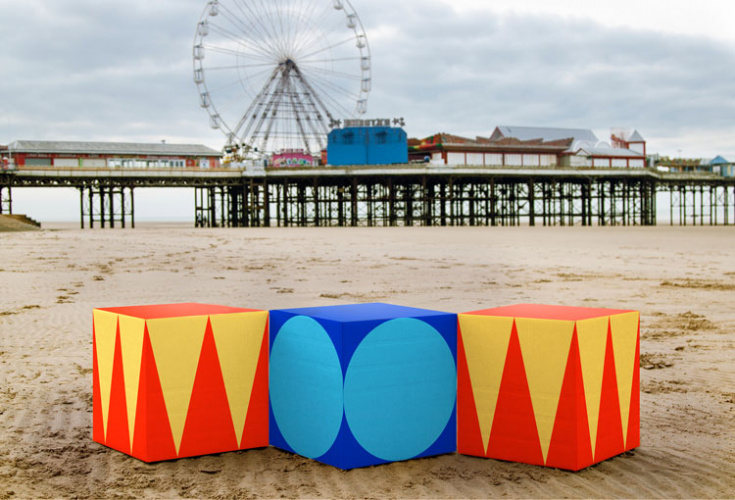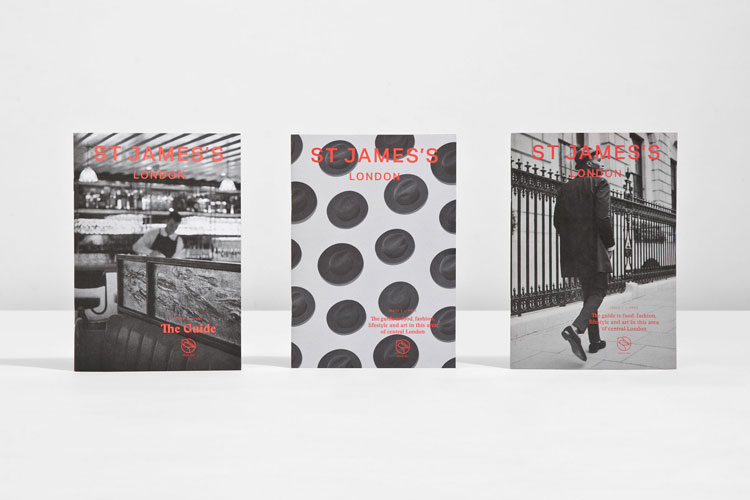How can small studios land big clients?
We speak to the design studios who have done it to find out how they got in front of clients and onto pitch lists in their formative years.
For any sized design studio, landing a well-known client can be a huge milestone. Not only does it serve to bring work to a bigger audience, but it can also lead to more work in the future.
But as a smaller studio, or one just established, getting the opportunity to pitch to bigger clients can be a mystery. Not being on pitching lists, without a substantial portfolio, or even just lacking the confidence to sell ideas can prove a considerable barrier to bigger projects.
This isn’t to say, however, that landing big clients as a small studio can’t be done. Design Week spoke to a selection of studios, which have elevated their profiles with great work and big wins. We wanted to find out how they landed their biggest clients so asked them to share their tips on how it all happened.

“We had to somehow get ourselves invited to pitch”
For many studios, the first obstacle in the way of landing bigger clients isn’t that their ideas aren’t picked, but that they aren’t able to pitch for work in the first place. Getting on a pitching list – the collection of studios a client has invited to pitch for a project – can be a struggle for a relatively unknown studio.
Like many, this was a problem for Manchester-based studio True North in its early days. Established in 2001, after just six months the team found out about a project involving the Imperial War Museum, which was looking to launch a northern branch in Manchester, through a chat with another agency.
“We had to somehow get ourselves invited to pitch,” says senior True North designer Victoria Pinnington. “We did this by sending the client a surprise box, containing some of our previous work.”
Showcasing their ability in a creative way, and encouraging their prospective client to “be brave”, Pinnington says, led to them being one of six agencies that pitched for the project, which they would go on to win.
“We were fortunate enough to work with Imperial War Museum for a further five years,” Pinnington says. “[And] winning the work has led to a wealth of commissions across leisure and culture.”

“We challenged the brief”
There is, of course, a temptation as a smaller studio to want to fulfil a client’s brief to the letter. But there’s also something to be said for feeling confident in your ability to question a brief even as a smaller studio, according to O Street co-founder David Freer.
According to Freer, his Glasgow-based outfit was a “fresh-faced studio of five years” when it won its biggest project to date: branding the National Galleries of Scotland (NGS). The original brief for the project, however, was not quite so far-reaching.
“The NGS were redeveloping the National Portrait Gallery venue and they wanted to create a standalone brand for the venue,” he says. During the pitch, the team showed similar work in their portfolio and talked through their approach, but most importantly, Freer says, they shared their thoughts on the brief in front of them.
“The insight we shared, which I think won us the work, actually challenged the brief and questioned the issue of not looking at all NGS’s venue brands all together as a family,” Freer says. This led, he explains, to O Street working beyond just the National Portrait Gallery and looking at the main NGS brand and its relationship to all its venue brands.
“We ended up working for quite a few years with NGS,” he says. “After establishing the brands and brand systems, we helped apply it to a number of exhibitions, signage and even a reception desk design for the Scottish National Gallery of Modern Art.”

“We went with our instincts”
This was a similar experience for London-based consultancy dn&co in its work with its biggest client, The Crown Estate’s St James’s neighbourhood.
“We were originally briefed on a small project for a new development in St James’s,” says Joy Nazzari, founding director at the studio. “But we knew the impact of our work would be limited if we did not address [the area’s] perception issues.”
Nazzari says it was a “bold move” for the team — then just five years old and with only small real estate projects under its belt — to propose an entire place rebrand. But she says, “we knew we could deliver, given the chance, and we went with our instincts”.
Reaching beyond the original brief, the team instead positioned the neighbourhood as a “modern heritage brand” – sensitive to its 350-year history but still contemporary.
“As a project, St James’s helped us develop our authority in place branding, giving us the confidence to push clients further to create places with a sense of purpose,” Nazzari reflects. “It also raised our profile as a studio, with a number of ambitious client briefs coming our way following the launch.”

Fostering “very collaborative relationships”
For studios that are new at the game, nurturing both client connections and industry relationships can be equally useful.
Matt Baxter, creative director at Brighton-based Baxter & Bailey says his team landed their biggest client – the 434 year-old Oxford University Press (OUP) – thanks “to a very kind introduction from another agency”.
“We remain extremely grateful to our industry pals for the referral,” says Baxter. From there, the team worked to cultivate good favour with OUP, something that has led to a prosperous four-year-long (and ongoing) relationship, the most recent outcome of which was the team’s rebrand of online maths teaching platform MyMaths.
Baxter says the team has a “very collaborative relationship” with OUP, which has provided several fruitful opportunities for brand and identity projects.
“They trust us to bring our insight, experience and creativity and in turn we listen to their peerless knowledge of their subject areas.”

“Every job you already have can lead to bigger opportunities”
It goes without saying that a job well done can lead to further work, and that small projects can become big projects quickly. For Studio Sutherland founder Jim Sutherland, understanding this is key.
As a studio of just two years, Sutherland says his team landed its biggest client – the world’s oldest children’s shoe company Start-rite – by being honest and enthusiastic.
“I was very clear early on that I was a small studio with little direct experience in their world,” he says. “[But] I was so excited about the prospect.”
The project, to create a new identity for the Start-rite brand – was well received, winning “several awards” and garnering a lot of press ad attention. Sutherland says it was a key part of the early success of the studio.
“Every job you already have can lead to bigger opportunities,” he says. “Often the best [thing to do is] concentrate on the work at hand. What is in front of you now, do that work as well as you possibly can, and everyone involved with it will (potentially) recommend you to others.”

“I feel strongly that large projects can be done by small studios”
In many cases, landing big clients as a small studio can be boiled down to confidence, Sutherland says.
“I was terribly insecure and shy when I was younger,” he says. “One of my old bosses told me when I set up – ‘when you are in the studio talking about the work, you are incredibly passionate – you just need to show 10% of that passion to the client’.”
Smaller studios, he says, can often offer different and in many ways more positive experiences for clients. These include more personal attention and more direct passion and creativity, rather than thinking of a project as just another part of the “business pipeline”.
“I feel strongly that large projects can be done by smaller studios,” he ends. “Treat every opportunity with the respect it deserves… It’s not an exact science, but you have to genuinely want to do the projects and have that come across.”
-
Post a comment





